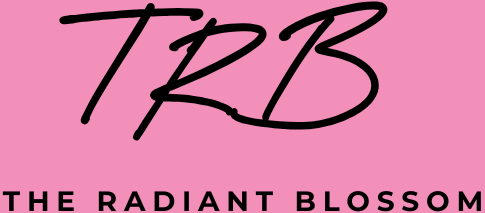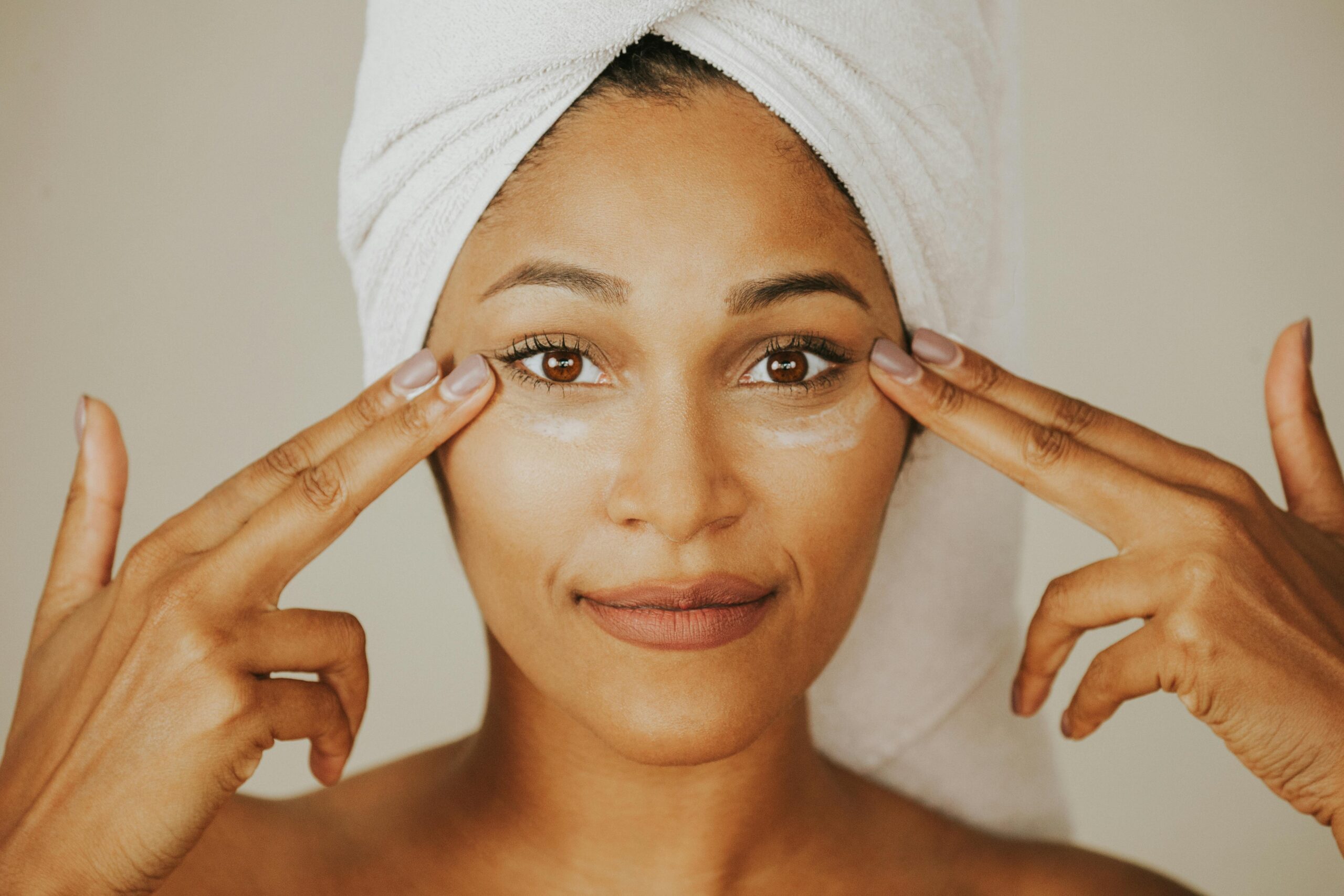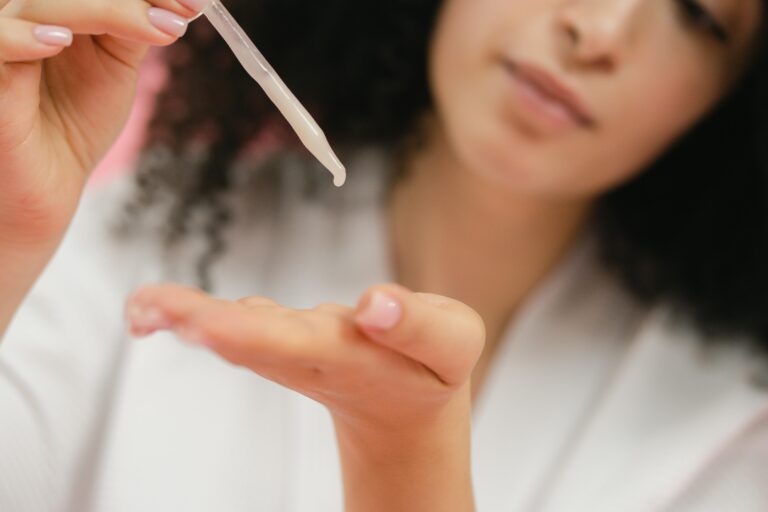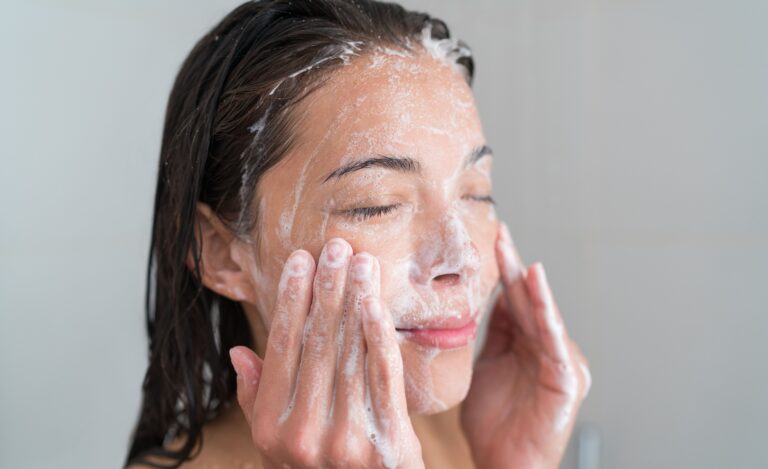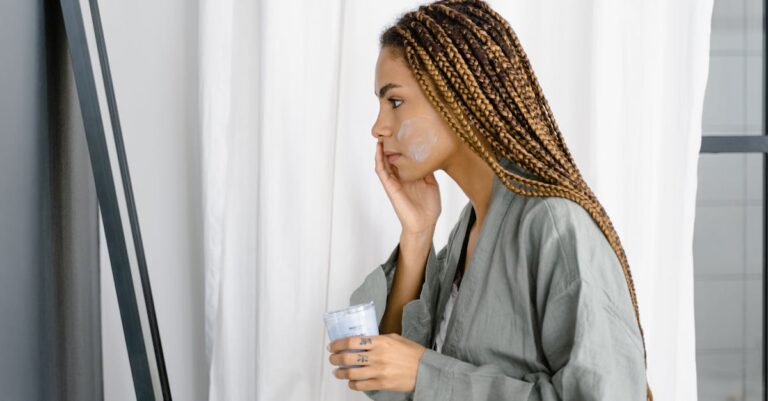In the ever-evolving world of skincare, it’s easy to get overwhelmed by the sheer number of products, trends, and routines. From cleansers and serums to moisturizers and masks, there’s a solution for nearly every skin concern. Yet, amidst all this, one often-overlooked hero quietly holds its ground: the eye cream.
The skin around the eyes is one of the first areas to show signs of aging, fatigue, and stress. Despite this, many people either skip eye creams entirely or don’t quite understand their purpose. Are they really necessary? Can’t you just use your regular moisturizer around the eyes? And with so many options on the market, how do you even choose the right one?
This guide aims to answer all of those questions—and more. Whether you’re a skincare enthusiast or just starting your journey, The Complete Guide to Eye Creams will walk you through everything you need to know: what eye creams are, how they work, what ingredients to look for, how to apply them correctly, and why they can make a noticeable difference in your skincare routine.
Let’s demystify the little jar that packs a powerful punch.
The Delicate Eye Area: Why It Needs Special Care
The area around your eyes might take up only a small portion of your face, but it demands big attention. Why? Because it’s structurally and functionally different from the rest of your skin.
Thinner Skin, Greater Vulnerability
The skin under and around your eyes is about 10 times thinner than the skin on other parts of your face. This delicate structure means it’s more prone to showing early signs of aging like fine lines, sagging, and dryness. It also lacks the robust fat and muscle support found in other areas, making it more susceptible to the pull of gravity and facial expressions.
Fewer Oil Glands
The under-eye region has significantly fewer sebaceous (oil) glands, which help keep skin naturally moisturized. This lack of oil production can lead to dryness and dehydration, especially as you age or are exposed to harsh environmental elements.
Constant Movement
Think about how often you blink, squint, smile, or rub your eyes. The muscles around your eyes are constantly in motion, and this repeated movement can lead to the formation of expression lines, such as crow’s feet.
Dark Circles and Puffiness
The eye area is also prone to issues like dark circles, which can be caused by genetics, poor circulation, lack of sleep, or hyperpigmentation. Puffiness, on the other hand, can result from fluid retention, allergies, or inflammation—often made worse by salty foods, alcohol, or crying.
More Sensitive to Irritants
Because the skin is thinner and more fragile, it’s also more sensitive to ingredients that might be perfectly fine elsewhere on your face. That’s why specialized formulations—like eye creams—are often gentler, fragrance-free, and ophthalmologist-tested.
Why This Matters
Ignoring the unique needs of the eye area can lead to faster visible aging, irritation, or ineffective skincare. Tailoring your routine to include a product specifically made for this zone isn’t just helpful—it’s essential for long-term skin health and appearance.
What Is an Eye Cream?
Eye creams are specially formulated skincare products designed to address the unique needs of the delicate eye area. Unlike general face moisturizers or serums, eye creams tend to have gentler formulations, smaller molecule sizes, and specific active ingredients that cater to common concerns like puffiness, dark circles, fine lines, and dryness.
What Makes Eye Cream Different?
The main differences between eye cream and regular facial moisturizers lie in:
- Texture: Eye creams are often lighter in consistency, allowing them to absorb quickly and avoid clogging the sensitive pores around the eyes.
- Concentration: Active ingredients are carefully measured to be effective yet non-irritating to the delicate skin.
- Fragrance-Free & Ophthalmologist-Tested: Many are free of common irritants and are tested for safety around the eyes, especially important for contact lens wearers or sensitive skin types.
Types of Eye Creams
Not all eye creams are the same—different textures serve different purposes:
- Creams: Rich and moisturizing, ideal for dry or mature skin.
- Gels: Cooling and lightweight, perfect for puffiness and oily or acne-prone skin.
- Balms: Thick and occlusive, designed for nighttime repair and deep hydration.
- Roll-ons: Often infused with metal applicators and caffeine for de-puffing and on-the-go use.
Targeted Skincare
Think of eye creams as precision tools—they’re not one-size-fits-all. A well-formulated eye product targets your exact concerns without overloading the sensitive area with heavy or irritating ingredients.
In short, an eye cream isn’t just a smaller version of your face cream. It’s a targeted treatment for one of the most expressive—and most vulnerable—areas of your skin.
Key Ingredients to Look For
Not all eye creams are created equal—and what makes them effective often comes down to the ingredients. Here’s a breakdown of powerhouse ingredients, categorized by the concerns they’re best at addressing.
For Anti-Aging: Fine Lines, Wrinkles & Crow’s Feet
These ingredients boost collagen, increase elasticity, and smooth out texture.
- Retinol (Vitamin A): Promotes cell turnover and collagen production; helps reduce fine lines and wrinkles. Eye creams use gentler or encapsulated forms.
- Peptides: Short chains of amino acids that signal your skin to produce more collagen and elastin.
- Coenzyme Q10 (CoQ10): A powerful antioxidant that protects against aging caused by environmental stressors.
- Bakuchiol: A plant-based retinol alternative that’s gentler and great for sensitive skin.
For Hydration & Dryness
These ingredients lock in moisture and help plump up the skin to reduce the appearance of lines.
- Hyaluronic Acid: A hydration hero that holds up to 1,000 times its weight in water.
- Ceramides: Help restore the skin barrier and prevent moisture loss.
- Glycerin: A humectant that draws moisture into the skin.
- Squalane: A lightweight, non-comedogenic oil that mimics natural skin lipids.
For Brightening & Dark Circles
While genetics and lifestyle contribute to dark circles, these ingredients can help brighten and improve tone.
- Vitamin C (Ascorbic Acid): Brightens, evens out skin tone, and provides antioxidant protection.
- Niacinamide (Vitamin B3): Reduces pigmentation and improves skin elasticity.
- Caffeine: Constricts blood vessels to reduce the look of dark circles and puffiness.
- Licorice Root Extract: Naturally brightens and reduces hyperpigmentation.
For Puffiness & Inflammation
Great for tired eyes or mornings after a salty meal or late night.
- Caffeine: (Yes, again!) Also helps reduce swelling and tightens skin.
- Green Tea Extract: Anti-inflammatory and rich in antioxidants.
- Chamomile: Soothes irritation and calms sensitive skin.
- Arnica: Known for its anti-inflammatory properties, often used in eye creams for puffiness or bruising.
For Soothing Sensitive Skin
Ideal if your under-eye area is reactive or prone to redness.
- Aloe Vera: Hydrating and calming.
- Cucumber Extract: Cooling, soothing, and mildly astringent.
- Panthenol (Provitamin B5): Moisturizing and healing.
- Allantoin: Helps calm and protect irritated skin.
Pro Tip:
Always patch test a new eye cream—especially if it contains actives like retinol or vitamin C—before applying it close to your eyes.
Do Eye Creams Really Work?
Let’s be real—if you’ve ever questioned whether eye creams are just a fancy mini moisturizer in a smaller (and more expensive) jar, you’re not alone. So here’s the truth: yes, eye creams can work—but only if you choose the right one for your needs and use it consistently.
Let’s break it down.
What Eye Creams Can Do:
- Hydrate the delicate under-eye area and prevent dryness.
- Smooth fine lines temporarily by plumping the skin with hydration.
- Reduce puffiness with de-puffing ingredients like caffeine or peptides.
- Brighten the appearance of dark circles (especially if caused by pigmentation or dullness).
- Protect with antioxidants to fight environmental damage and premature aging.
- Support collagen production when formulated with actives like retinol or peptides.
What Eye Creams Can’t Do:
- Completely erase deep wrinkles or sagging skin overnight.
- Eliminate dark circles caused by genetics, bone structure, or visible blood vessels.
- Replace medical treatments like Botox, fillers, or surgical procedures.
- Work miracles after just a few uses—consistency is key.
Science vs. Marketing Hype
The effectiveness of an eye cream comes down to two main things:
- The quality and concentration of active ingredients.
- How well those ingredients are tolerated by the sensitive eye area.
Some studies support the use of ingredients like retinol, peptides, and caffeine in reducing signs of aging and puffiness. However, many products on the market are underpowered or overhyped. That’s why reading ingredient lists and managing expectations is so important.
Complementary Lifestyle Factors Matter
Even the best eye cream won’t be enough if other habits are working against you:
- Poor sleep
- Dehydration
- High-sodium diets
- UV exposure
- Smoking or alcohol consumption
- Excessive screen time
Using an eye cream alongside healthy habits enhances results and supports long-term skin health.
Bottom Line
Eye creams aren’t miracle workers—but they can absolutely improve the look and feel of the skin around your eyes when used consistently, correctly, and for the right reasons. Think of them as part of a supportive team effort, not a one-player game-changer.
When and How to Apply Eye Cream
Knowing how and when to apply your eye cream can make a big difference in how effective it is. A lot of people either skip this step or use way too much. Let’s break it down for maximum impact and minimal mistakes.
When Should You Start Using Eye Cream?
There’s no strict rule, but here’s a general guide:
- In Your 20s: Prevention is key. Look for lightweight hydrating or antioxidant-rich formulas to protect and maintain youthful skin.
- In Your 30s: Start targeting early signs of aging—fine lines, occasional puffiness or dullness.
- 40s & Beyond: Go for richer formulas that support collagen production and repair. This is the time for retinol, peptides, and more intensive hydration.
Best Times to Apply Eye Cream
- Morning: Use lightweight, de-puffing, and brightening eye creams with caffeine or antioxidants. Look for formulas that layer well under makeup and sunscreen.
- Evening: Opt for richer, more nourishing creams with ingredients like peptides or retinol. These can work overnight while your skin repairs itself.
Pro Tip: You can apply eye cream both morning and night if your skin tolerates it—just tailor the formula to the time of day.
How Much to Use?
A little goes a long way. Use about a grain of rice-sized amount for both eyes combined. Too much product can actually cause puffiness or irritation.
Application Tips:
- Use your ring finger — it applies the least pressure, which is perfect for this fragile area.
- Dot, don’t smear. Dab small dots of product under the eye, from the inner to outer corner.
- Pat gently. Tap the product into your skin using light, quick pats. Don’t rub or drag the skin.
- Don’t get too close. Stay just below the lash line and above the cheekbone; the product will naturally spread as it absorbs.
Where to Apply Eye Cream:
- Under the eyes
- Around crow’s feet
- Along the orbital bone
- Optional: Upper eyelid and brow bone (only if the product is tested and safe for use there)
Common Mistakes to Avoid:
- Using too much product
- Rubbing the skin
- Applying too close to the eyes
- Layering incompatible ingredients (e.g., using a strong retinol eye cream with an acid-based serum)
Eye cream isn’t just about what you apply—it’s about how and when you apply it. Treat your eye area with care and patience, and over time, you’ll definitely see the payoff.
How to Choose the Right Eye Cream for Your Needs
With hundreds of options lining the skincare shelves, choosing the right eye cream can feel like a shot in the dark. But it doesn’t have to be. The trick? Start by understanding your skin type, your concerns, and what ingredients will actually help.
Step 1: Identify Your Primary Concern
Ask yourself: What do I want this eye cream to do? Match your need with targeted ingredients.
| Concern | Go-To Ingredients |
|---|---|
| Fine lines / aging | Retinol, peptides, CoQ10, hyaluronic acid |
| Dark circles | Vitamin C, niacinamide, caffeine, licorice root |
| Puffiness | Caffeine, green tea extract, peptides |
| Dryness | Ceramides, glycerin, squalane, hyaluronic acid |
| Sensitivity | Aloe vera, panthenol, chamomile, fragrance-free |
Step 2: Know Your Skin Type
This influences the formula type you should go for:
- Dry or mature skin: Look for rich creams or balms with deep hydration and anti-aging properties.
- Oily or acne-prone skin: Go with lightweight gels or non-comedogenic formulations.
- Sensitive skin: Choose fragrance-free, alcohol-free, hypoallergenic products with soothing ingredients.
- Combination skin: You may want a light cream or gel-cream hybrid that balances hydration without heaviness.
Step 3: Age as a Factor (But Not the Rule)
While age isn’t the only indicator, it can help guide your choices:
- 20s: Stick with hydration, antioxidants, and light textures. Prevention is your power move.
- 30s–40s: Begin incorporating retinol, peptides, and more intensive treatments.
- 50s+: Seek out collagen-supporting, deeply hydrating, and firming ingredients.
Step 4: Watch for Irritants
The eye area is sensitive, so avoid:
- Added fragrance
- High concentrations of alcohol
- Strong actives (unless formulated for eyes)
- Essential oils (unless you’ve tested for tolerance)
Step 5: Budget vs. Luxury
You don’t have to splurge to get results. Many drugstore eye creams contain high-performing ingredients that rival luxury brands. That said, luxury products often offer better textures, absorption, and user experience.
Pro Tip: Spend more on ingredients that are hard to stabilize (like Vitamin C or encapsulated retinol). Save on basics like hydrating gels.
Step 6: Patch Test First
Always test a new eye cream on your wrist or behind your ear before applying it near your eyes—especially if it contains actives like retinol or acids.
Choosing the right eye cream is about understanding your skin and your goals. Once you’ve nailed that, the rest is just consistency and patience.
Common Myths About Eye Creams
There’s a lot of noise out there when it comes to eye creams—some of it helpful, but a lot of it? Not so much. Let’s clear up the confusion and set the record straight on some of the most common myths.
Myth 1: You Can Just Use Your Regular Moisturizer
Truth: While some moisturizers are gentle enough to be used around the eyes, most aren’t formulated for the delicate skin in that area. Eye creams are specifically designed with smaller molecule sizes and lower concentrations of actives to prevent irritation. Plus, they often target unique concerns like puffiness, dark circles, or fine lines that face moisturizers don’t address.
Myth 2: The More Expensive the Eye Cream, the Better
Truth: Price doesn’t always equal performance. There are plenty of drugstore options that contain the same active ingredients as luxury brands—sometimes even at better concentrations. What matters more is the ingredient list and how the product performs on your skin.
Myth 3: Eye Creams Don’t Really Work
Truth: They do work—but only if you’re using the right product for your concern, applying it correctly, and managing expectations. They’re not overnight miracle workers, but with consistency, they can improve hydration, brightness, texture, and more.
Myth 4: You Don’t Need Eye Cream Until You’re Older
Truth: Eye cream isn’t just for mature skin. Starting in your 20s or 30s with a gentle, preventative formula can delay signs of aging and protect your skin long-term. Think of it as investing in your future face.
Myth 5: Eye Creams Should Only Be Used at Night
Truth: You can (and often should) use eye creams both morning and night. In the morning, go for lighter formulas with antioxidants or caffeine to reduce puffiness and protect from the day’s stressors. At night, richer creams or ones with actives like retinol are ideal for repair and renewal.
Myth 6: You Should Apply Eye Cream Right Up to Your Lashes
Truth: Nope! That’s too close. The product naturally migrates as it absorbs, so applying right along the orbital bone is plenty. Going too close can lead to stinging or watery eyes.
Myth 7: You’ll See Results Instantly
Truth: While some ingredients (like caffeine or light-reflecting particles) offer quick results, long-term changes take time. Most people start seeing visible improvement after consistent use for 4–6 weeks—sometimes longer depending on the concern.
Busting these myths helps cut through the marketing fluff and keeps you focused on what actually matters: choosing smart ingredients, using proper technique, and giving your skin time to respond.
Eye Creams for Different Skin Types
Your skin type isn’t just about your T-zone or whether you break out—it also affects how the skin around your eyes behaves. Choosing an eye cream that works with your skin type can make all the difference in how well it performs and how your skin reacts.
Dry Skin
Concerns: Flakiness, tightness, fine lines, dullness
Best Eye Cream Type: Rich creams, balms, or oil-based formulas
Look for:
- Hyaluronic acid
- Ceramides
- Squalane
- Shea butter
- Glycerin
Pro Tip: Layer a hydrating serum underneath for an extra moisture boost. Avoid anything with strong actives (like high-percentage retinol) unless your skin is already used to them.
Oily or Acne-Prone Skin
Concerns: Milia (tiny bumps), shine, clogged pores
Best Eye Cream Type: Lightweight gels or gel-creams
Look for:
- Niacinamide
- Caffeine
- Lightweight humectants (like hyaluronic acid)
- Non-comedogenic formulas
Avoid: Heavy oils or thick, greasy balms that might cause congestion or milia.
Sensitive Skin
Concerns: Redness, irritation, stinging, dryness
Best Eye Cream Type: Fragrance-free, minimal-ingredient creams or gels
Look for:
- Panthenol (Vitamin B5)
- Allantoin
- Chamomile
- Aloe vera
- Madecassoside (from centella asiatica)
Pro Tip: Always patch test and avoid formulas with fragrance, essential oils, or alcohol.
Mature or Aging Skin
Concerns: Fine lines, wrinkles, loss of elasticity, dark circles
Best Eye Cream Type: Targeted creams with anti-aging actives
Look for:
- Retinol (or bakuchiol if sensitive)
- Peptides
- CoQ10
- Vitamin C
- Niacinamide
Bonus Tip: Mature skin often needs both hydration and active repair. Consider alternating between a rich hydrating cream and a retinol-based formula at night.
Combination Skin
Concerns: Dry under-eyes with occasional oiliness or puffiness
Best Eye Cream Type: Balanced gel-cream textures
Look for:
A mix of humectants (like hyaluronic acid) with light moisturizers and antioxidants. Caffeine is also great for morning puffiness.
Pro Tip: Use different creams for different times of day or skin moods. A lightweight gel in the morning, richer cream at night.
Choosing an eye cream that suits your skin type + specific concerns helps you get real, visible results—without irritation or wasted product.
Eye Creams vs. Serums vs. Gels — What’s the Difference?
There are a lot of products out there for your eye area—creams, serums, gels, balms, rollers… it can get overwhelming. So how do you know which one is right for you? Let’s break down the differences by texture, function, and benefits.
Eye Creams
Texture: Rich, creamy, or balm-like
Best For: Dryness, aging, fine lines, and overall nourishment
Strengths:
- Provide long-lasting hydration
- Help lock in moisture
- Often include anti-aging ingredients like peptides, ceramides, or retinol
- Great for night use or dry climates
Ideal for: Dry, mature, or normal skin types needing moisture and repair.
Eye Gels
Texture: Lightweight, water-based, cooling
Best For: Puffiness, tired eyes, oily or sensitive skin
Strengths:
- Absorb quickly and feel refreshing
- Often contain de-puffing agents like caffeine or green tea
- Don’t leave a greasy residue
- Great for morning routines or layering under makeup
Ideal for: Oily, acne-prone, or sensitive skin, or if you want a no-fuss morning pick-me-up.
Eye Serums
Texture: Thin, fluid, concentrated
Best For: Targeting specific concerns like dark circles, wrinkles, or pigmentation
Strengths:
- High concentrations of actives (like vitamin C, retinol, peptides)
- Lightweight but potent
- Meant to be layered under a cream or gel
Ideal for: Anyone serious about treatment—especially for aging or pigmentation issues.
Quick Comparison Chart:
| Product Type | Main Purpose | Best Time to Use | Skin Types |
|---|---|---|---|
| Cream | Hydration + anti-aging | Night (or both) | Dry, mature |
| Gel | De-puffing + cooling | Morning | Oily, puffy, sensitive |
| Serum | Targeted treatment | Before cream | All skin types (esp. for concerns) |
Can You Use More Than One?
Absolutely! In fact, layering a serum + cream is a power combo:
- Apply eye serum (let it absorb)
- Seal in with eye cream or gel for moisture
Just be sure the products are compatible—avoid layering strong actives (like retinol and acids) unless they’re designed to work together.
Understanding these differences helps you build a smarter eye-care routine—without product overload.
Final Tips and Takeaways
After diving deep into ingredients, techniques, and product types, you’ve got all the tools to make smart, personalized decisions about eye creams. Let’s finish off with a few golden rules to remember.
Top Tips for Using Eye Cream Effectively
- Less is more. A rice-sized amount for both eyes is enough—overdoing it can lead to puffiness or irritation.
- Apply gently. Use your ring finger and pat, don’t rub. Be kind to your delicate under-eye skin.
- Start early. Prevention is key. You don’t have to wait until signs of aging appear to begin.
- Consistency is everything. Most products take 4–6 weeks to show results—use them daily to get the benefits.
- Tailor to time of day. Use lighter, de-puffing formulas in the morning; richer, repairing ones at night.
- Know your ingredients. Match products to your concerns—retinol for wrinkles, caffeine for puffiness, vitamin C for dark circles, etc.
- Watch for reactions. If you experience burning, milia, or redness, scale back or switch formulas.
- Store smart. Some ingredients (like vitamin C or caffeine) do best in cool, dark places—or even the fridge for an extra cooling effect.
- Use SPF. Many under-eye concerns are worsened by sun damage. Protect the area daily—even if your eye cream doesn’t have SPF.
Before You Buy: A Mini Checklist
- Does it match your skin type?
- Are the ingredients suited for your concern?
- Is it fragrance-free if you’re sensitive?
- Can it be used day and/or night?
- Is the price point reasonable for your needs?
Final Thought:
Eye cream isn’t magic, but it can be powerful when used correctly. Think of it as a small act of daily self-care—something that supports both your skin and your confidence over time.
